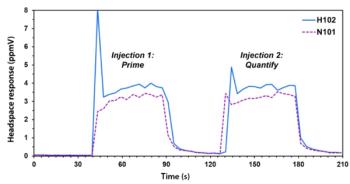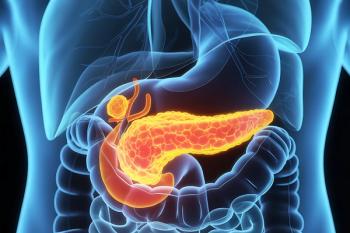Key Points
- Laparoscopic surgeries using energy devices release surgical smoke that contains polycyclic aromatic hydrocarbons (PAHs), which are known to be cytotoxic, mutagenic, and carcinogenic. These compounds pose potential health risks to healthcare workers through inhalation.
- Researchers used gas chromatography-mass spectrometry (GC-MS) to quantify PAHs in surgical smoke. While PAH concentrations during liver and rectal cancer surgeries were below carcinogenic risk levels, differences in deposition patterns suggest potential toxicity should not be dismissed.
- The study acknowledged limitations such as small sample size and exclusion of gaseous PAHs. Future research should involve larger samples and consider the behavior of fine and gaseous PAHs to better assess risks to healthcare workers.
During surgery, the use of energy devices may generate and disperse surgical smoke into the operating room, especially in cases involving laparoscopic surgery.
Research conducted by the Nursing School of North Henan Medical University (Xinaing, China) and The First Affiliated Hospital of Harbin Medical University (Harbin, China) aimed to quantify polycyclic aromatic hydrocarbons during laparoscopic surgery. Gas chromatography-mass spectrometry (GC-MS) was used to evaluate the carcinogenic risks to healthcare workers. A paper based on their work and findings was published in the Journal of International Medical Research (1).
Energy devices such as electric knives, lasers, and ultrasonic scalpels are commonly used during surgical procedures to separate tissues and seal blood vessels. Cell decomposition, rupture, and evaporation occur during this process, which may release surgical smoke into the air (2). Composed of 95% water or steam and 5% particles (3), previous research reported that the surgical smoke particles vary in size and can deposit onto different parts of the human respiratory system: particles with a size >5 µm deposit on the nasopharynx wall, those with a size between 2 and 5 µm enter the trachea and bronchi, and those smaller than 1 µm, similar to gas molecules, can penetrate downward into the alveoli and further transfer to cellular tissue and/or the circulatory system (4,5).
Inhaling particulate matter (PM) has the potential to cause adverse effects on human health due to the variety of toxic compounds attached to its surface, among which polycyclic aromatic hydrocarbons (PAHs) are considered the most cytotoxic, mutagenic, and carcinogenic organic chemicals (6). Previous studies have shown that PAHs promote the production of large amounts of reactive oxygen species, which leads to oxidative stress in the cardiovascular and pulmonary systems, and can possibly cause DNA damage (7). Even short-term exposure to PAHs may lead to eye and skin irritation, nausea, and vomiting; long-term exposure may lead to liver and kidney damage and increased risk of lung cancer, skin cancer, and bladder cancer as well as gene mutations, cell damage, and increased rates of cardiovascular and pulmonary mortality (8). Furthermore, epidemiological studies have revealed that PAHs may cause adverse effects on female reproduction and fetal development as well as several later childhood issues, including low IQ, behavioral problems, allergies, or asthma (9,10).
Researchers involved in this study collected and classified surgical smoke generated during laparoscopic surgery in a large teaching hospital in northern China. Laparoscopy is a surgical procedure used to examine the organs in the abdomen as well as a woman’s pelvic organs. The technique uses a thin lighted tube called a laparoscope that has a video camera. The tube is put into an incision in the patient’s belly, and the camera images can be seen on a computer screen (11).
In this study, quantitative and qualitative analyses of polycyclic aromatic hydrocarbons were performed using GC-MS. Multiple types of polycyclic aromatic hydrocarbons were generated during laparoscopic surgery. The polycyclic aromatic hydrocarbon concentrations remained below the carcinogenic risk levels in both laparoscopic liver cancer surgery and rectal cancer resection procedures.However, the researchers stated that the deposition pattern and concentration of polycyclic aromatic hydrocarbons generated during laparoscopic liver and rectal cancer resection surgeries in the human respiratory tract are different; therefore, the potential toxicity of polycyclic aromatic hydrocarbons in the smoke to the health of healthcare workers should not be ignored (1).
However, the researchers admit to limitations with their study. First, due to time and resource constraints, the sample size for collecting surgical smoke was not sufficiently large, and gaseous PAHs were not measured; this may have had an impact on the final study results. Also, the PAH concentrations in their data showed the amount of surgical smoke adsorbed on all inhalable particles, without considering the diffusion of smoke in the environment and the filtering effect of protective devices. The researchers believe that the conducting of further research should increase the sample size and focus on the impact of gaseous and fine particulate PAHs on healthcare workers (1).
References
1. Fengxia, C.; Jin, D.; Lian, A. Surgical Smoke-Related Occupational Injuries Among Medical Professionals in the Operating Room. J. Int. Med. Res. 2025, 53 (6), 3000605251347553. DOI: 10.1177/03000605251347553
2. Fencl, J. L. Guideline Implementation: Surgical Smoke Safety. AORN J. 2017, 105 (5), 488-497. DOI: DOI: 10.1016/j.aorn.2017.03.006
3. Ulmer, B. C. The hazards of surgical smoke. AORN J. 2008, 87 (4), 721-734; quiz 735-738. DOI: 10.1016/j.aorn.2007.10.012
4. Limchantra, I. V.; Fong, Y.; Melstrom, K. A. Surgical Smoke Exposure in Operating Room Personnel: A Review. JAMA Surg. 2019, 154 (10), 960-967. DOI: 10.1001/jamasurg.2019.2515
5. Kim, K. H.; Kabir, E.; Kabir, S. A Review on the Human Health Impact of Airborne Particulate Matter. Environ. Int. 2015, 74, 136-143. DOI: 10.1016/j.envint.2014.10.005
6. Boström, C. E.; Gerde, P.; Hanberg, A. et al. Cancer Risk Assessment, Indicators, and Guidelines for Polycyclic Aromatic Hydrocarbons in the Ambient Air. Environ. Health Perspect. 2002, 110 (s3), 451-488. DOI: 10.1289/ehp.110-1241197
7. Kermani, M.; Rahmatinia, T.; Oskoei, V. et al. Potential Cytotoxicity of Trace Elements and Polycyclic Aromatic Hydrocarbons Bounded to Particulate Matter: A Review on in vitro Studies on Human Lung Epithelial Cells. Environ. Sci. Pollut. Res. Int. 2021, 28 (40), 55888-55904. DOI: 10.1007/s11356-021-16306-y
8. Kim, K. H.; Jahan, S. A.; Kabir, E.. et al. A Review of Airborne Polycyclic Aromatic Hydrocarbons (PAHs) and Their Human Health Effects. Environ. Int. 2013, 60, 71-80. DOI: 10.1016/j.envint.2013.07.019
9. Bolden, A. L.; Rochester, J. R.; Schultz, K. et al. Polycyclic Aromatic Hydrocarbons and Female Reproductive Health: A Scoping Review. Reprod. Toxicol. 2017, 73, 61-74. DOI: 10.1016/j.reprotox.2017.07.012
10. Drwal, E.; Rak, A.;Gregoraszczuk, E. L. Review: Polycyclic Aromatic Hydrocarbons (PAHs)-Action on Placental Function and Health Risks in Future Life of Newborns. Toxicology 2019, 411, 133-142. DOI: 10.1016/j.tox.2018.10.003
11. Laparoscopy. Johns Hopkins Medicine website.https://www.hopkinsmedicine.org/health/treatment-tests-and-therapies/laparoscopy#:~:text=Laparoscopy%20is%20a%20surgical%20procedure,(incision)%20in%20your%20belly (accessed 2025-06-12)






